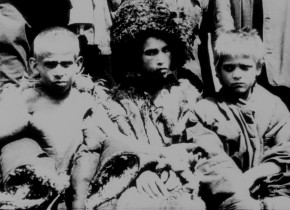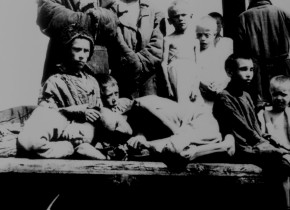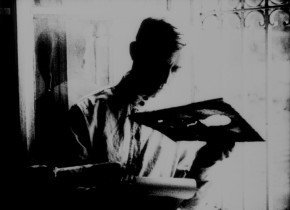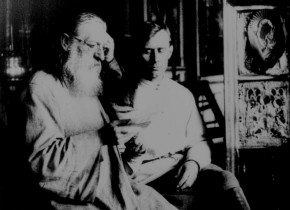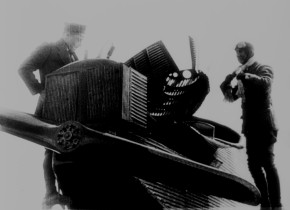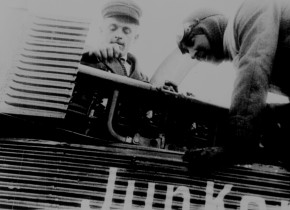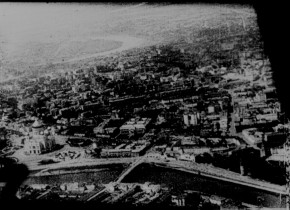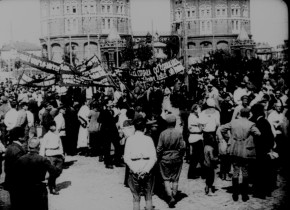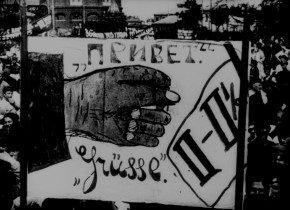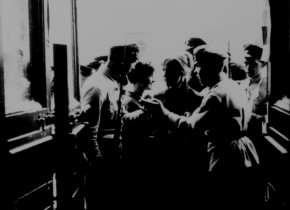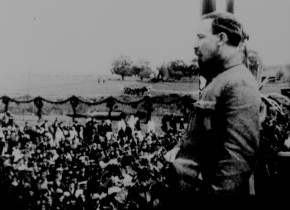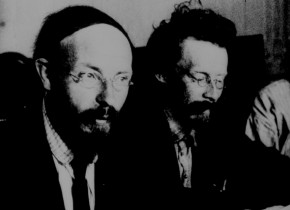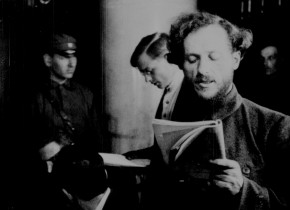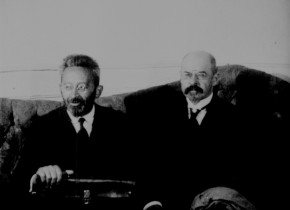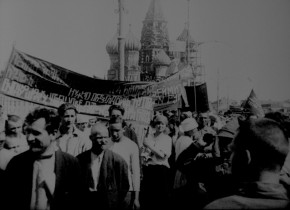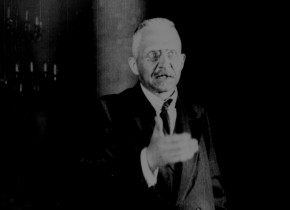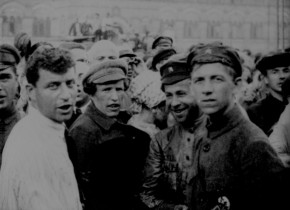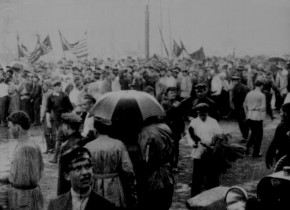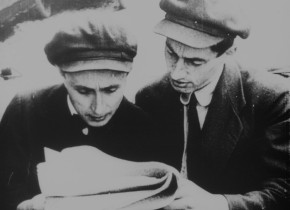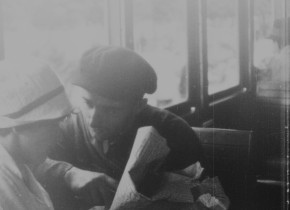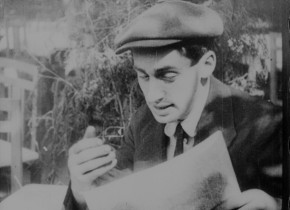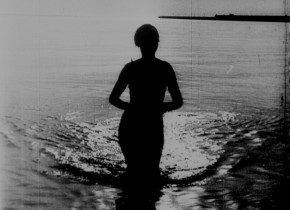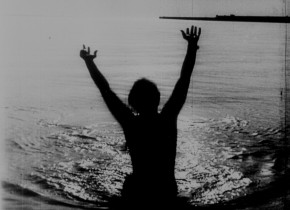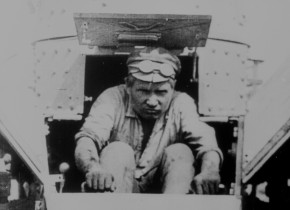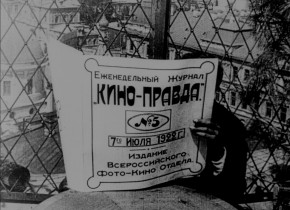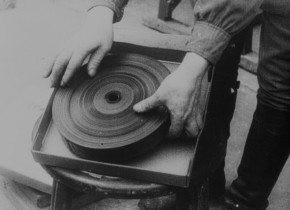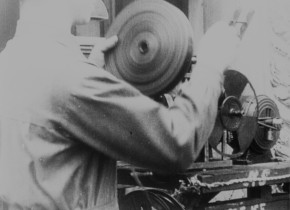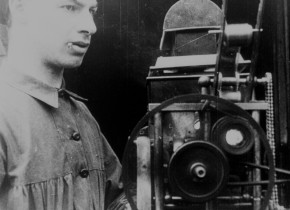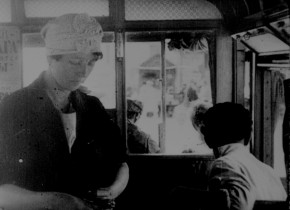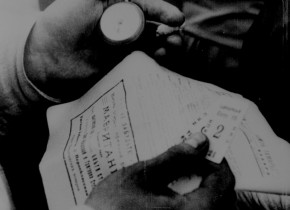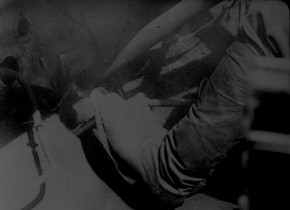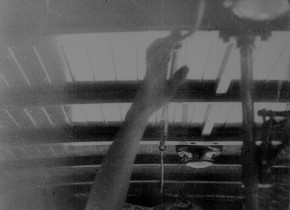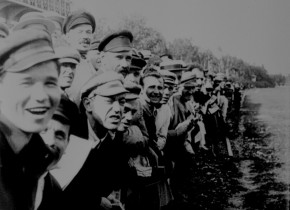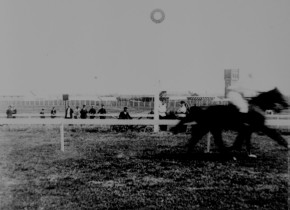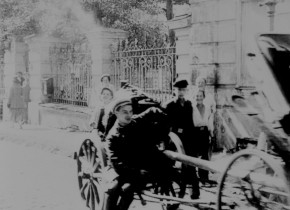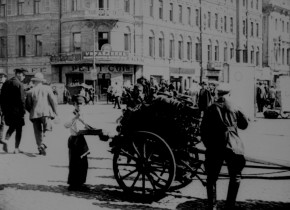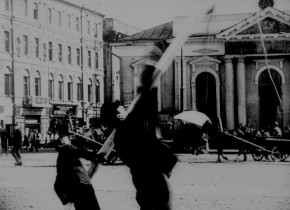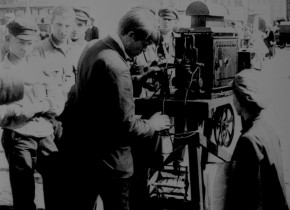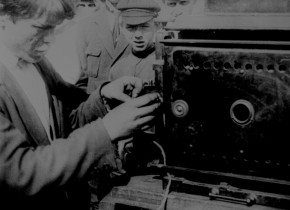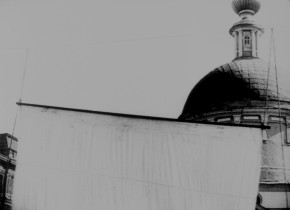Yuri Tsivian: Kino-Pravda No. 1–9 (1922)
That the newsreel Kino-Pravda, like the newspaper Pravda, was less about news and more about statements, made Vertov's task interestingly difficult. He felt he needed to string facts into sequences, and make sequences read like statements – something he kept trying to achieve from the very first issue. Kino-Pravda No. 1 is a good example. It begins with heart-rending pictures of starving children (1922 saw dreadful famine in Russia). It is what Vertov's theory calls a "fact." The starving-children sequence consists of 16 shots. Then Vertov moves on to another "fact" of Russia's political life in 1922: the requisitioning of the valuables possessed by the Russian Orthodox Church. Another 15 shots show Soviet authorities plucking pearls and jewels from icons in the presence of depressed, unresisting clergy. Then a title patches the two subjects together: "Every pearl saves a child." And so on. The trick may not look terribly ingenious by today's standards, but it must have been in 1922. Dialectical editing: thesis – antithesis – synthesis. Kino-Pravda not only shows – it explains!
1922 was the year of political Grand Guignol. The views of famine were devastating. The requisitioning of the Church's holdings made some hearts sink, some beat faster. But the most thrilling political show that summer was the trial of the S.R.s (short for the Party of Socialist-Revolutionaries). This was a public trial, the first of its kind in Russia, and quite unique in the sense that it was a court trial of a political party by a political party. Distinct from the Bolshevists, the Socialist-Revolutionaries did not call themselves the workers' party: their point was that in a country like Russia, with a predominantly peasant population, the dictatorship of the proletariat entailed the tyranny of the minority. Another distinction between the two parties was in their ideas about the technology of revolution. The Bolshevists worked by means of strikes and agitation, while the S.R.s relied on individual terrorism (to their credit, the S.R.s never went for soft targets; their objectives were generals, ministers, and tsars). The S.R. party was crucial in the first, anti-monarchist revolution in February 1917, and had a majority in the interim government. When the Bolshevists overthrew this government in October 1917, the S.R.s had every right to consider that their show has been stolen. During the rule of the Bolshevists the S.R.s continued in the same vein. In 1918 one of them, the Socialist-Revolutionary Fania Kaplan, used her Browning to shoot Lenin, who survived but never fully recovered from his wound.
There were other acts, some more successful, but the national and international reputation of the S.R. party was such that they could not be banned and disbanded as easily as, say, the Anarchists in 1918.
I trust the reason for my excursion into historical fact becomes obvious: it sets the scene for what will become a recurrent heading in the first 8 issues of Kino-Pravda, "The S.R. Trial," one of Russia's top news events of the year. In June 1922, 47 top Socialist-Revolutionaries were brought to court, and newspapers were busy covering the trial until August. Kino-Pravda also followed the ongoing story. Issue No. 1 shows a crowd picketing a railway station in Moscow, as a delegation of European Socialists headed by the Belgian Emile Vandervelde arrives to serve as international defenders of the S.R.s. Some members of the crowd carry banners saying "Cain! Cain! Where is your brother Karl?" To unravel this Biblical allusion, one needs to know that one of the arriving S.R. defenders was German Socialist politician Theodor Liebknecht, the brother of Karl Liebknecht, the German Communist leader murdered in 1919.
We see various street manifestations and "punish-them" rallies – most definitely arranged by powers from above, for it is hard to believe that the crowd in Red Square shown in Kino-Pravda No. 3 would stand through that torrential rain without strict orders. But whether or not the crowds were composed of political extras, the general interest about the trial's outcome must have been genuine. No one could have seriously doubted that such a political trial could end with anything but a conviction, but exactly what the verdict would be, and whether some would get away with it, kept public interest alive. Apparently, bets were made – at least that is what we learn from Kino-Pravda No. 8, which begins with two men quarrelling. One says, "They will surely be shot." The other doubts it. "Let's bet on it!" says the intertitle. The scene changes. We are now in the courtroom. The judges are out deliberating. An insert: the face of a clock. A finger moves the clock's hands to indicate the passage of time. In the street, people crowding around a kiosk are shown waiting for the newspaper with the verdict to arrive. A newsboy is shown running and shouting. A man leans out of the window of a running tram to pick up a newspaper from the boy. Our two bettors drive by in a car and get a copy ... But I must be careful not to give away the verdict!
Needless to say, this issue of Kino-Pravda consists mostly of staged scenes. But who are the players? The man in the tram is Dziga Vertov. The man who bets "They will surely be shot" is Vertov's brother, cameraman Mikhail Kaufman. Kaufman's betting opponent is Ivan Beliakov, Vertov's cinematographer and graphic artist. The man standing in line for a newspaper is Vertov's friend, cameraman Aleksandr Lemberg. In other words, these are all Kinocs ("Kino-Eye men") – members of a group which, ironically, condemned any acting in movies. One good thing about Vertov is that he never felt enslaved by his own dogmas.
There are touches of experimentation in the first 8 issues of Kino-Pravda, which only grow bolder in subsequent issues (note, for instance, the somewhat awkward POV trick with a girl swimmer, or the trick with the tank driver's close-up). Perhaps the most interesting of these are Vertov's games with the film's title. Kino-Pravda No. 5 begins with a view of a man whose face is hidden behind the newspaper he is reading. The title of this sham newspaper is "Kino-Pravda No. 5. July 7, 1922." In other words, the man reading the paper represents us, the spectators, and the paper he is reading stands for the film we are watching. In the next issue, Kino-Pravda No. 6, Vertov tries out another trick, the likes of which he will try again, 7 years later, in Man with a Movie Camera. It begins with a close-up of a box, on which we read the words "Kino-Pravda No. 6. July 14, 1922." A man comes and opens the box, which turns out to contain a reel of film. The man threads the film – the very film we are watching – into a projector, and the newsreel Kino-Pravda No. 6 begins. Take a careful look at the projectionist at work. I could not believe my eyes – but he seems to be smoking as he opens the box and takes out the nitrate film! Verily, Vertov's time was not for the nervous.
Vertov was a fast learner. Much as he said he despised fiction movies, he learned quite a bit from them. As was fashionable among young intellectuals in the early 1920s, Vertov found Russian and German films slow and portentous, but did admit that unpretentious American action movies were worth studying.
In his first essay, "We: Variant of a Manifesto," published in August 1922, he wrote: "To the American adventure film with its showy dynamism and to the dramatizations of the American Pinkertons, the kinocs say thanks for the rapid shot changes and the close-up. Good ... but disorderly, not based on a precise study of movement." (As translated in Annette Michaelson, ed., Kino-Eye: The Writings of Dziga Vertov, 1984, p. 6.)
Keep this passage in mind as you watch Kino-Pravda No. 9, which came out in August 1922. Take a random half-minute sequence. The opening of the racing season in Moscow: people in cars and buses are heading for the Moscow Hippodrome. A routine bus ride – but what makes it interesting is that Vertov renders it in 10 shots: the conductor selling tickets (1.6 metres); the driver starting the engine (0.8 metres); the engine running (1.3 metres); a passenger's hand holding onto the railing (0.5 metres); the driver's foot pressing the accelerator (0.5 metres); and so on. Ten shots in half a minute, an average of 3 seconds per shot. The main thing is that there is no dramatic or narrative necessity to cut that fast. Pure experiment: speed for speed's sake.
In the new Russia, speed was a religion. Want to know how fast a mobile projection unit can be deployed in a Moscow square? A live experiment is staged to establish this – find the filmed record in issue 9 of Kino-Pravda. We see someone phoning the Photo-Kino Committee. Title: "Give a film show in Strastnaia Square." The request is transmitted to the mobile projection unit: "Take peredvizhkino no. 4 and depart for Strastnaia Square. Start the show at 9." Peredvizhkino (or "ambulkino," if we try to translate this Soviet acronym for mobile film-showing equipment) is taken out of the depot and hooked up to a horse-drawn cab. As the cabman reaches Strastnaia, the countdown begins. To the amazement of passers-by, a screen is stretched across the square, and the equipment is unloaded and set up. "Peredvizhkino can be deployed for a show in 8 minutes," the title announces. Don't ask who on earth would ever need a movie show set up in 8 minutes. Speed for speed's sake!
From: Yuri Tsivian, Catalogue "Le Giornate del Cinema Muto," Sacile/Pordenone 2004
<< Introduction by Tsivian
>> Tsivian on Kino-Pravda: No. 10–14
<< back to overview
